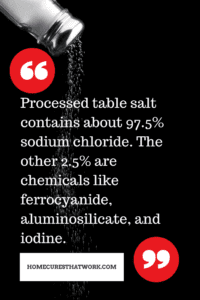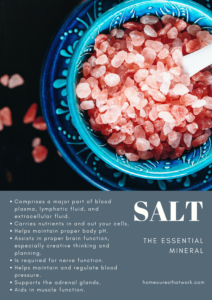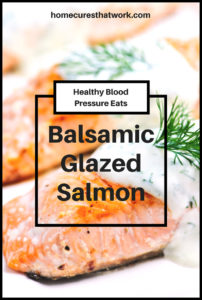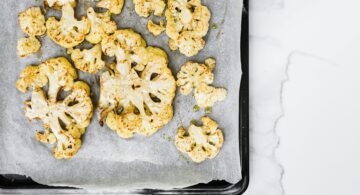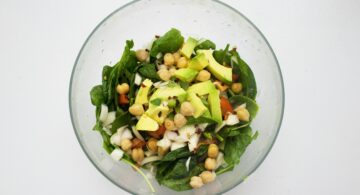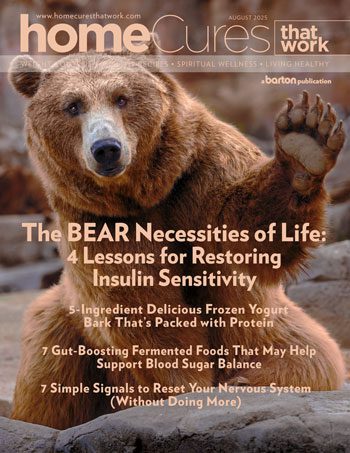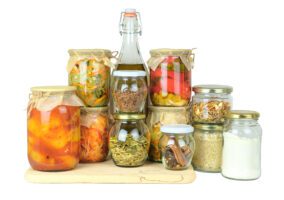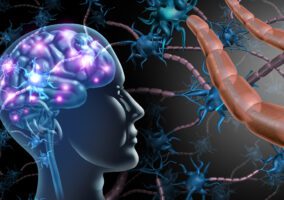Salt and Your Heart: Finding the Delicate Balance
What is Salt?
Salt’s makeup is approximately 40% sodium and 60% chloride. Processed table salt contains about 97.5% sodium chloride. The other 2.5% are chemicals like ferrocyanide, aluminosilicate, and iodine.[1] Processed table salt also goes through a high-heat cleansing process that alters its chemical structure. By contrast, Himalayan salt and other unprocessed salts consist of about 84% sodium chloride. The other 16% is naturally occurring minerals.[2]
Salt—an Essential Mineral
You and I cannot exist without salt. Salt is crucial for numerous bodily functions. Salt:[3]
- Comprises a major part of blood plasma, lymphatic fluid, and extracellular fluid.
- Carries nutrients in and out your cells.
- Helps maintain proper body pH.
- Assists in proper brain function, especially creative thinking and planning.
- Is required for nerve function.
- Helps maintain and regulate blood pressure.
- Supports the adrenal glands.
- Aids in muscle function.
The average American consumes about 3700 mg of salt per day and this amount has remained constant for the past 50 years.[4] The American Heart Association recommends limiting our salt intake to no more than 2,300 mg per day with an ideal limit of 1,500 mg.[5]
Why the Concern over Too Much Salt?
Too much salt can cause water retention. This increases the amount of fluid in your blood vessels. And the additional fluid creates more pressure in the cardiovascular system raising blood pressure. High blood pressure is the number one risk factor in heart disease. One-third of adults in America have high blood pressure.[6]
The cause-and-effect of salt would seem to be pretty straight forward, but there’s more to the story. Consider the following:
- About 77% of our salt intake comes from eating processed foods and only about 10% from the saltshaker. The remaining 13% comes from naturally occurring sodium in real foods.[7]
- The Japanese enjoy a lower occurrence of cardiovascular disease than most developed countries in the world. Yet their sodium consumption exceeds ours at 4650 mg per day.[8]
- An eight-year study in Europe followed 3,681 middle-aged healthy individuals. Researchers broke participants into three groups: those who consumed low salt, medium salt, and high salt. Over the course of the eight years, researchers tracked the mortality rates for each of the three groups. Fifty people died in the low-salt group; 24 died in the medium-salt group; and 10 died in the high-salt group.[9]
- Consuming too little sodium can result in hyponatremia (too low sodium) causing a variety of health issues, not the least of which is death.[10] Hyponatremia can occur after severe sweating during work or exercise, due to vomiting or diarrhea, or by aggressively restricting your intake of salt.[11]
- Tom and Dian Griesel, PhD wrote, “The optimal level of salt in our diets has been a controversial subject for at least 20 years. There is no disagreement that high blood pressure (even moderately high) is a risk factor for heart disease and stroke. However, salt consumption does not seem to have the same effect on everyone. In addition, there is usually no distinction on the type of salt used. There are many naturally harvested salts that also contain many trace minerals, which undoubtedly have an effect. Medical literature on the salt consumption (like many other things) is inconsistent.”[12]
The above points merely scratch the surface of the sodium controversy. The Washington Post reports:
A lack of conclusive evidence leads to disagreements among scientists over what constitutes threatening sodium levels in the diet. One group of scientists argues that the vast majority of Americans should lower their salt intake and calls for strict salt limits. Another group argues that most Americans are eating a healthy amount of salt and that lowering salt intake to the U.S. recommended levels actually increases the risk of cardiovascular disease.[13]
And Dr. Joseph Mercola, MD, boldly claims, “Twenty-five years of scientific evidence fails to show any benefit of a low-salt diet.”[14]
So, let’s draw several important points from what we read above.
- Since 77% of our sodium intake comes from eating processed foods, processed foods are the primary culprit and not sodium. If we stopped eating processed foods and only ate real food, we could still use the saltshaker liberally and be well within the recommended daily limits.
- Studies on the impact of sodium on heart disease have failed to take other factors into consideration. For instance, one of the major ingredients in processed foods is sugar. Sugar negatively impacts our health to an even greater extent than salt. Too much sugar causes insulin resistance, which in turn causes diabetes, heart disease, high blood pressure, kidney failure, and a host of other chronic illnesses.[15] The fact that the Japanese eat more salt than we do, but enjoy a lower occurrence of heart disease may be explained by many other factors. Some of these include: eating more fish, getting more exercise, and numerous other Japanese cultural practices. Another factor is where we live and how much exercise we get. Hot, humid climates that cause one to sweat more and rigorous exercise both deplete sodium in the body. People who experience those conditions need more salt.[16] Medications like aspirin, ibuprofen, and other non-steroidal anti-inflammatory drugs may reduce levels of sodium in the body.[17] Finally, there is a strong link between sodium and potassium in the body. When this delicate balance gets out of whack, our health can suffer. The best way to achieve this balance is by eating real whole foods and avoiding processed foods.[18]
- The type of salt we use may be a contributing factor. As mentioned above, refined, processed table salt contains chemicals not found in natural salts. Remember, Himalayan salt and other unprocessed salts consist of about 84% sodium chloride. The other 16% is naturally occurring minerals. We cannot discount the effect that these trace minerals may have on our overall health.[19]
Since the primary cause for concern over salt is high blood pressure, let’s turn our attention to natural ways to lower blood pressure and maintain a healthy heart.
9 Tips for Lowering Blood Pressure Naturally[20], [21], [22]
- Lose excess weight. Carrying around extra pounds profoundly affects your health. Losing weight can lower your blood pressure, make it easier for your heart to do its job, lower your blood sugar levels, give you more energy, and help you look better, feel better, and sleep better.
- Exercise moderately. Engage in moderate exercise three-to-four times a week for 45 minutes. The key here is to find an exercise that you enjoy and one that is easy to work into your schedule and circumstances. Find an exercise partner to help keep you accountable and to make the experience more enjoyable.
- Eat whole foods and avoid processed foods. Doing this will “kill many birds with one stone.” Eating only whole foods will help you lose weight, reduce your sugar and salt intake, and improve your gut and immune system. Whole foods are heart-healthy.
- Eat potassium-rich foods. Remember that balance we talked about between sodium and potassium? Potassium lowers blood pressure. Some foods rich in potassium include: potatoes, sweet potatoes, tomatoes, oranges, bananas, kidney beans, peas, cantaloupe, honeydew melon, prunes and raisins.
- Reduce stress in your life. Stress is one of the chief causes of high blood pressure in our culture. When under stress, your body produces stress chemicals that adversely impact your health. Simplify your life. Take a look at your calendar: if you’re running from one thing to the next all day long, decide which things you need to eliminate from your schedule. Also, seek to reconcile broken relationships. Take a 20-minute nap each day. Pray daily.
- Get plenty of sleep. Lack of sleep can cause or worsen high blood pressure. Adults need 7 to 8 hours of sleep per night. Getting plenty of sleep will also help reduce your stress.
- Limit your alcohol and caffeine intake. Both caffeine and alcohol are stimulants that increase blood pressure. If you’re already under stress, caffeine intensifies the effects of stress on your body, raising blood pressure. As you’ve probably heard, one glass of wine per day can actually lower blood pressure, but more than that has the opposite effect.
- Quit smoking if you smoke. Nicotine raises blood pressure pure and simple. And inhaling smoke damages virtually every organ in the body.
- Listen to soothing music. A regular routine of relaxing music has been shown to lower blood pressure. We invite you to try Wholetones to achieve this effect.
As we’ve seen, processed food is more the culprit than salt itself. Avoiding processed food and eating only whole foods is the key to maintaining proper amounts of sodium and potassium. This is heart healthy and can help you maintain normal blood pressure.
Below are a couple of heart-healthy recipes. Eating meals like these aren’t like taking a pill that will lower your blood pressure after 20 minutes. But eating a regular diet of whole foods can help lower your blood pressure over time. In fact, I challenge you to put the above tips into practice for 30 days and see what impact it has on your blood pressure.
Balsamic Glazed Salmon
Ingredients for four servings [23]
- 16 oz. salmon filet
- Black pepper
- ¾ cup balsamic vinegar
- 1 Tbsp extra virgin olive oil
- 1 Tbsp lemon juice
- 2 heads of broccoli
- 2 large or four small sweet potatoes or yams
Directions
- Heat oven to 450 degrees.
- Season salmon to your liking with pepper. Place on a cookie sheet or in a 9×13 baking dish and bake 10-12 minutes.
- While the salmon is baking, prepare the following:
- Wash and cut broccoli into small florets and steam.
- Prick yams or sweet potatoes with a fork and microwave on high until done, testing with a fork.
- Combine balsamic vinegar, olive oil and lemon juice to make a glaze and mix well in a microwavable dish. Microwave at half-power for 1 minute, stir and microwave again for 1 more minute.
- When all is ready, drizzle glaze over salmon and serve.
Chicken with Creamy Mushroom Sauce and Sautéed Greens with Pecans
Ingredients for the chicken with mushroom sauce for four[24]
- 10 oz. of baby bell mushrooms sliced. (Note: any combination of mushrooms can be used as long as you end up with about 12 cups uncooked.)
- 2 Portobello mushrooms, cleaned, halved and thinly sliced
- 8 oz. of sliced white button mushrooms
- 4 – 6 oz. skinless, boneless chicken breasts
- ¼ tsp Himalayan salt
- ¼ tsp ground black pepper
- 4 tsp coconut oil (divided)
- 1 tsp dried thyme
- ¼ cup water
- 1 Tbsp all-purpose flour
- ½ cup sour cream
Ingredients for the sautéed greens
- 2 tsp coconut oil (divided)
- 5 oz. baby kale
- 5 oz. baby spinach
- 1 tsp minced garlic
- 1/8 tsp salt
- ¼ tsp ground black pepper
- 2 Tbsp finely chopped, unsalted pecans
- 2 tsp white vinegar
Directions
- Prepare all the mushrooms: wipe the baby bell mushrooms with a wet paper towel. Trim and discard the ends and thinly slice each mushroom. Clean the Portobello mushrooms by removing and discarding each stem. Use a spoon to scrape the black gills from the underside and discard gills. Slice each Portobello in half and then thinly slice each half vertically. Slice all mushrooms to about the same size.
- Season chicken with salt and pepper. Add 2 tsp oil to a large non-stick skillet or large Dutch oven. Warm over medium-high heat and add chicken. Sauté until both sides of chicken are golden, about 8 to 10 minutes. Transfer chicken to a plate and cover with foil.
- Add remaining 2 tsp oil to the pan and continue cooking over medium-high heat. Add all the mushrooms, stirring often until mushrooms are softened. Stir in pepper, thyme, and water. Use tongs to place chicken back into the pan. Increase heat to high; when boiling, cover with a lid and reduce heat to medium. Cook until chicken is done (about 15 minutes).
- Meanwhile, prepare the sautéed greens. Add oil into a large nonstick sauté pan and warm over medium-high heat. Add all the baby kale, stirring constantly until wilted, about 2 to 3 minutes. Repeat, adding spinach and garlic, stirring constantly until wilted, another 2 to 3 minutes. Stir in salt, pepper, and pecans. Remove from heat. Drizzle vinegar over the greens and transfer to a platter. Transfer cooked chicken breasts to the platter on top of the greens.
- The mushrooms have been cooking. Now, increase the heat in the pan to high and add flour, stirring constantly as the mushroom liquid thickens slightly. Remove from heat and stir in sour cream until dissolved. Pour mushroom sauce over chicken and serve.
We challenge you to take an American Heart Month challenge by following through with the 9 tips for lowering blood pressure above. Take your blood pressure now, then after a month of adhering to those tips, check your blood pressure again and see the difference. Keep in mind that if you’ve got years of poor health practices behind you, it may take a while to make significant gains in your health, but you can do it!
Eliminating salty foods doesn’t have to be a drag – it can even be delicious. Here’s how to swap fruits and veggies for carbs, make a delicious dairy-free chocolate ice cream and whip up anti-inflammatory eggs.



